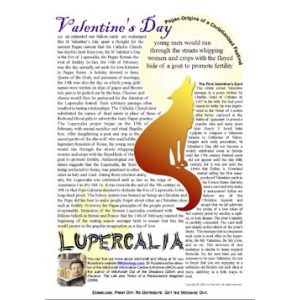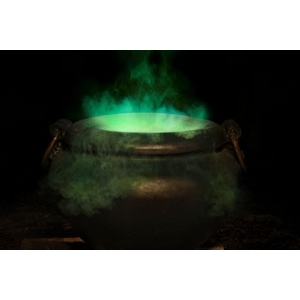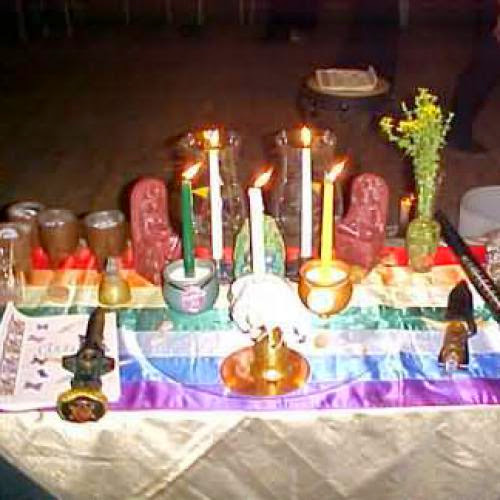First questions are usually about 'stuff and tools'. I LOVE all my witchy *Thangs*, but never confuse them with the Source of Magic. Wands don't make magic.
If I am outside because it is a full or new moon, or a Solar HolyDay, I tend to bring lots of stuff with me. I don't necessarily bring everything you might see in a group ritual, just what I feel like having according to the moment and the occasion. I've been known to spend the entire day taking things outside to set up a circle in preparation for a ritual just for myself. The preparation, the tools and objects, the creation of an alter, all appeal to the artist in me. It is something I find great pleasure in.
If the reason I am circling is more than celebretory, if I have a specific personal goal in mind, I tend to take less stuff with me, choosing only things I feel most appropriate, and those sparingly. I guess I see a division between 'celebratory' and 'working' ritual. I see 'tools' of ritual as more important in Celebratory Circles and to the working of magic in a group ritual rather than a Solitary one. They help to create the boundaries of sacred space, they add a sense of mystery and help to bring a group into the focus that is needed for working together. Tools have less to offer me in Solitary ritual, I just don't need them as much as in group work.
In any ritual, regardless of the purpose or number of people, I start by grounding and centering. These two are similar, but I see them as distinct from one another. Grounding is more of establishing a connection. I see magic, the use of power and energy as a gift, a loan, the source being the Earth and the Goddess, Grounding is establishing the connection. I can offer you a visualization that I used to use if you want, (it is one of a tree, sending roots deep into the earth) but I recommend you see this as another 'tool' and
use it only as an aid to finding your own source/feeling of power.
I don't use a visualization, and I'm not really sure how I can accurately describe what I do....other than to tell you I look within, find inside myself the source of connectedness and power and then let it resonate. This resonance is what I call centering.
The feelings of calling and focusing the Energy of the Earth are powerful ones, centering is becoming adjusted to that feeling, finding your own silence in the midst of a tornado of Power.
I ground and center sitting on the earth, hands touching the ground, eyes closed. The alter and anything I need will already be set up, there may already be a candle burning, sometimes I will open my eyes and stare into the candle before I go any further to cast a circle. I think of this time as waiting to see the circle that wishes to be cast. I don't usually plan ahead what I'm going to say or whom I will invoke, I wait until these moments and follow my instincts.
I usually use smudge, but rarely do a cleansing or banishing in solitary space (and even in group ritual if I remember to add salt to the water its with my Goddess given fingers not some ceremonial knife).
To cast the circle I stand in each of the directions E,S,W,N, and call in the spirits of that direction. My roots are Dianic, I invoke only the Feminine as I call the quarters. I do not in Solitary ritual separately invoke the Goddess, instead I invoke Her in each of her aspects as I come to each direction. At times my words, my intent is to call more upon an essence of a particular direction, other times I directly invoke a particular Goddess that represents to me what I am doing and which direction I am facing.
I know this is sketchy...Here's an example of what I mean: In the East, I usually invoke the essence of the direction, that of beginnings of birth and rebirth. This is the direction in which I see my Friend and Guide the Owl and the direction of my birth, therefore I usually do not invoke a particular Goddess here. In the South, I will usually invoke a particular Goddess, one who represents either emotion or the emotions that I am feeling in regard to the work I am doing. In the West I will include both the essence of the direction
as well as a Goddess Aspect, this direction is an introspective, reflective one and comes easily to me. The North is the direction of the greatest Mystery, I linger the longest and speak the least here, usually invoking using an Ancient Goddess name or names.
To call each of the directions I face them from the edge of the circle and raise my arms in what I call the Goddess sign, others call a yonic symbol. I will draw an invoking Pentagram in the air when in group ritual, but in Solitary I draw Pentagrams on my body instead. I draw one over left breast for E, vulva for S, right breast for W and forehead for N, womb for Center. This symbolizes my belief that magic comes from within, and that every woman's body is as the body of the Goddess.
I continue around the circle twice more, pausing in each direction, it is a bit of a trance inducer for me and the belief again that we create magic with our actions - casting the circle as I walk it's path three times.
Yes, my circle casting does blur the lines between *casting the circle* and *invoking*. I'm sure there are many traditionalists who would look down their pointy lil noses at this. But after a decade of walking this spiral path... I am inclined to smirk at comments from RigidWitches. If you take any advice from these pages, let it be to follow your OWN sense of Magic and Mystery.
Spirits of the Mystery Realms, both known and those un-met
I call as Priestess of the Mother,
daughter of Diana, daughter of Astarte, daughter of Artemis,
Mother of All.
As my Grandmothers before me
From time out of mind
In this place that is not a place
I dance between the Worlds
The Circle is Cast
Suggested ebooks:
Phil Hine - On CursingLeo Ruickbie - Halloween And Samhain
Labels: literature witchcraft valentines lupercalia witchcraft compared caledonii hecatine hierarchical titles ritual area philosophy witchcraft jesus original pagan transcendental magic veneris english version panchanga tantra calendar magic wish-granting pentacle ritual ceremony holy liber mass temple




















